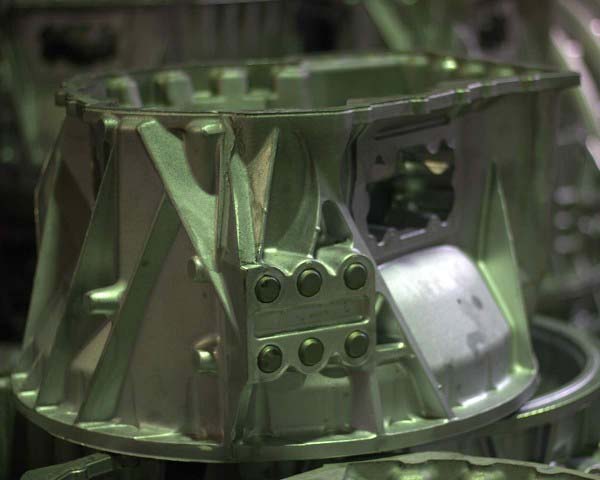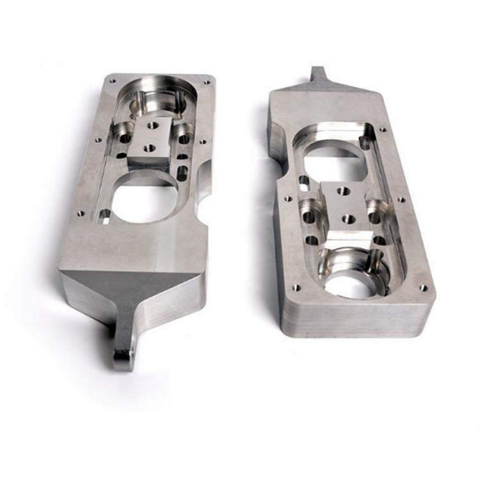Exploring the Innovative Procedures Behind Modern Light Weight Aluminum Shop Workflow
Modern light weight aluminum foundry operations are undertaking considerable makeover. Automation and AI are reshaping manufacturing approaches, boosting both performance and accuracy. The assimilation of 3D printing is improving mold and mildew development, while sustainability techniques are coming to be extra important. Each of these improvements plays a crucial function in redefining the market. Nonetheless, the implications of these changes prolong past simple manufacturing effectiveness. What obstacles and opportunities lie ahead for light weight aluminum factories in this developing landscape?
The Duty of Automation in Aluminum Foundries

Furthermore, automation adds to boosted safety requirements within the shop environment. By moving dangerous tasks to machines, human workers can concentrate on supervisory roles and quality control, minimizing the risk of crashes. Additionally, data analytics stemmed from automated procedures offer important understandings right into functional performance, causing far better decision-making and continuous improvement. As the demand for light weight aluminum items expands, the adoption of automation modern technologies will likely increase, even more transforming the landscape of aluminum foundry operations.
Improvements in Casting Technologies
Recent improvements in casting innovations are transforming light weight aluminum foundry procedures. Advancements such as 3D printing assimilation, progressed alloy formulas, and automated procedure optimization are improving efficiency and product top quality. These growths are essential in satisfying the developing demands of the market.
3D Printing Combination
Incorporating 3D printing modern technology into light weight aluminum shop operations has actually reinvented traditional casting methods, enhancing both performance and precision. This ingenious approach permits the rapid production of intricate mold and mildews and cores, greatly decreasing preparations and material waste. By utilizing additive manufacturing, factories can develop intricate geometries that were difficult or previously tough to accomplish with traditional strategies. The adaptability of 3D printing likewise allows quick layout modifications, promoting an extra agile manufacturing process. On top of that, this integration supports the use of lightweight structures, which is significantly important in sectors such as auto and aerospace. As aluminum factories continue to embrace 3D printing, they place themselves at the leading edge of technical improvement, driving enhancements in product top quality and functional capabilities.
Advanced Alloy Formulations
The development of advanced alloy formulations has actually significantly boosted casting innovations in aluminum foundry operations. These formulas integrate different elements, such as magnesium, silicon, and copper, to boost mechanical properties and thermal resistance. By tailoring the structure of light weight aluminum alloys, makers can attain particular performance attributes that meet the demands of diverse applications, from automotive elements to aerospace structures. The usage of sophisticated alloys additionally adds to lowered weight and increased stamina, which are critical consider contemporary design. In addition, innovations in alloy development allow much better fluidness throughout casting, causing enhanced surface area finishes and minimized flaws. In general, progressed alloy solutions represent a considerable jump ahead, positioning light weight aluminum foundries to meet the progressing demands of various markets efficiently.
Automated Refine Optimization
Improvements in casting innovations have actually led the way for automatic process improvement in aluminum factory operations. By incorporating advanced software program and real-time data analytics, shops can currently improve production processes and enhance quality control. Automated systems monitor variables such as cooling, temperature, and pressure rates, enabling prompt changes that minimize defects and waste. In addition, artificial intelligence algorithms assess historical efficiency data to anticipate optimal settings, thereby raising effectiveness and minimizing cycle times. Robotics additionally play a substantial duty, dealing with repetitive tasks that enhance safety and security and accuracy. On the whole, these advancements not just drive operational efficiency but additionally make it possible for shops to fulfill the growing demand for top notch aluminum parts in numerous sectors.
Smart Production and Market 4.0 Combination
The combination of Smart Production and Industry 4.0 within light weight aluminum factories is changing operational effectiveness. By leveraging IoT innovations, automation, and robotics, foundries can maximize production processes and reduce downtime. Additionally, data analytics supplies essential understandings that boost decision-making and drive continual enhancement.
IoT in Shop Procedures
As producers progressively embrace the Net of Things (IoT), shop operations are experiencing a transformative change towards clever manufacturing and Industry 4.0 combination. Aluminum Foundry. IoT modern technologies allow real-time data collection and evaluation, improving decision-making procedures and operational performance. Sensing units and linked devices monitor tools efficiency, material usage, and environmental problems, enabling proactive maintenance and resource optimization. This connectivity cultivates a more active production atmosphere, where changes can be made promptly in feedback to market needs. Additionally, IoT promotes improved traceability and quality assurance, as information from the whole manufacturing cycle can be easily accessed and examined. In general, the integration of IoT in shop operations considerably boosts performance and drives technology in aluminum manufacturing processes
Automation and Robotics Integration
Automation and robotics combination is transforming light weight aluminum factory procedures by enhancing efficiency and accuracy. This transformative approach enhances processes such as molding, putting, and finishing, lowering human error and boosting result consistency. By utilizing innovative robotic systems, foundries can attain higher production rates while maintaining rigorous high quality requirements. Automated systems likewise allow real-time monitoring and flexible control, enabling speedy modifications to manufacturing criteria. On top of that, the integration of robotics decreases labor expenses and alleviates safety dangers related to manual handling of molten metal. As factories welcome smart manufacturing concepts integral in Sector 4.0, the harmony in between automation and robotics strengthens their competitive edge, paving the way for lasting development and innovation in the light weight aluminum casting market.
Data Analytics for Efficiency
Utilizing data analytics greatly enhances performance within light weight aluminum factory procedures, aligning with clever production and Industry 4.0 concepts. By leveraging real-time information collection and analysis, foundries can keep an eye on manufacturing processes, anticipate equipment failings, and optimize source allowance. This data-driven approach assists in insightful decision-making, making it possible for managers to boost and identify bottlenecks process. In addition, predictive analytics empowers foundries to prepare for market needs, thus reducing waste and ensuring prompt product delivery. Assimilation of information analytics with IoT tools enhances operational visibility, cultivating a positive maintenance culture. Eventually, applying these innovative analytical methods not just improves performance however also drives innovation, positioning light weight aluminum foundries to satisfy the developing demands of the industry while keeping competitive edges in a quickly altering landscape.
Sustainable Practices in Light Weight Aluminum Spreading
While the light weight aluminum spreading industry has actually traditionally faced ecological difficulties, several foundries are currently embracing lasting methods to mitigate their effect (Aluminum Foundry). A significant focus has been on reusing aluminum scrap, which not only decreases waste yet additionally conserves power contrasted to key aluminum production. Ingenious melting innovations, such as induction furnaces, enhance power efficiency and lower greenhouse gas exhausts
Additionally, shops are applying closed-loop water systems to minimize water consumption and minimize thermal air pollution. The usage of environment-friendly binders in mold-making processes is acquiring traction, further reducing unsafe discharges.
Furthermore, some centers are buying renewable aluminum casting energy sources to power procedures, lining up with international sustainability goals. By incorporating these techniques, the light weight aluminum casting industry is evolving toward a much more environmentally responsible future, demonstrating that economic growth can exist together with environmental stewardship - Aluminum Foundry. These efforts show a dedication to sustainability and the relevance of environmental accountability in production
Quality Assurance Innovations
As the aluminum spreading industry advances in the direction of sustainability, the value of quality assurance advancements ends up being progressively obvious. Modern aluminum factories are embracing advanced innovations to enhance their quality control procedures. Methods such as real-time surveillance and data analytics enable suppliers to identify inconsistencies and issues early in the manufacturing cycle. Executing automated inspection systems equipped with machine discovering algorithms assurances that items satisfy strict top quality standards while minimizing human mistake.
The integration of non-destructive testing techniques, such as radiographic and ultrasonic assessments, supplies deeper insights right into the stability of castings without damaging the product. These advancements not only improve product reliability however likewise decrease waste, straightening with sustainability goals. Furthermore, the adoption of standardized high quality structures aids improve operations throughout various factories, ensuring consistency in result. Collectively, these innovations are improving high quality control, fostering a culture of quality within the light weight aluminum casting market.
Future Fads in Light Weight Aluminum Foundry Workflow
What technologies exist in advance for light weight aluminum shop operations? The future of light weight aluminum factories is poised for makeover with improvements in automation, fabricated intelligence, and lasting practices. The combination of robotics and automated systems is expected to enhance efficiency and precision in the casting processes, reducing human error and labor costs. Furthermore, AI-driven analytics will certainly enable real-time tracking and anticipating maintenance, optimizing functional efficiency and reducing downtime.
Sustainability stays a focal factor, with foundries progressively embracing environmentally friendly methods, such as using recycled light weight aluminum and creating low-emission melting technologies. Advancements in 3D printing are additionally expected to reinvent mold-making, permitting complicated geometries and decreased material waste. As the sector accepts digitalization, data-driven decision-making will become crucial, making it possible for foundries to respond quickly to market needs. Collectively, these trends promise to redefine light weight aluminum shop procedures, making them a lot more efficient, sustainable, and adaptable to future challenges.

Regularly Asked Concerns
What Precaution Are Carried Out in Aluminum Foundry Procedures?
Aluminum foundry procedures implement different precaution, consisting of individual safety tools, ventilation systems to manage fumes, regular safety and security training, emergency situation response strategies, and rigid monitoring of temperature level and devices to avoid accidents and assurance employee safety.
How Do Shops Take Care Of Labor Force Training for New Technologies?

What Materials Are Frequently Recycled in Light Weight Aluminum Foundries?
Light weight aluminum shops generally recycle scrap light weight aluminum, consisting of post-consumer items like beverage cans, automobile components, and building products. This reusing process lowers waste and saves resources, contributing to a more sustainable light weight aluminum manufacturing sector.
How Does Light Weight Aluminum Spreading Impact the Setting?
Light weight aluminum casting impacts the setting via energy-intensive procedures, greenhouse gas emissions, and prospective regional air pollution. Developments in reusing and lasting techniques can minimize these impacts, advertising an extra eco-friendly technique to aluminum manufacturing.
What Are the Normal Lead Times for Aluminum Spreading Projects?
Typical preparation for aluminum casting jobs differ significantly, generally ranging from two to six weeks. Variables influencing these timelines include intricacy, order size, and material accessibility, influencing total manufacturing timetables in foundry procedures.
Automation significantly plays an important duty in light weight aluminum shops, improving efficiency and accuracy in the production procedure. Advancements in casting modern technologies have led the method for automated procedure enhancement in aluminum shop operations. Harnessing data analytics greatly improves performance within light weight aluminum factory operations, lining up with smart production and Industry 4.0 principles. A significant emphasis has been on reusing light weight aluminum scrap, which not just lowers waste yet additionally preserves energy compared to key aluminum manufacturing. Aluminum factories typically recycle scrap light weight aluminum, consisting of post-consumer items like beverage canisters, vehicle parts, and construction products.